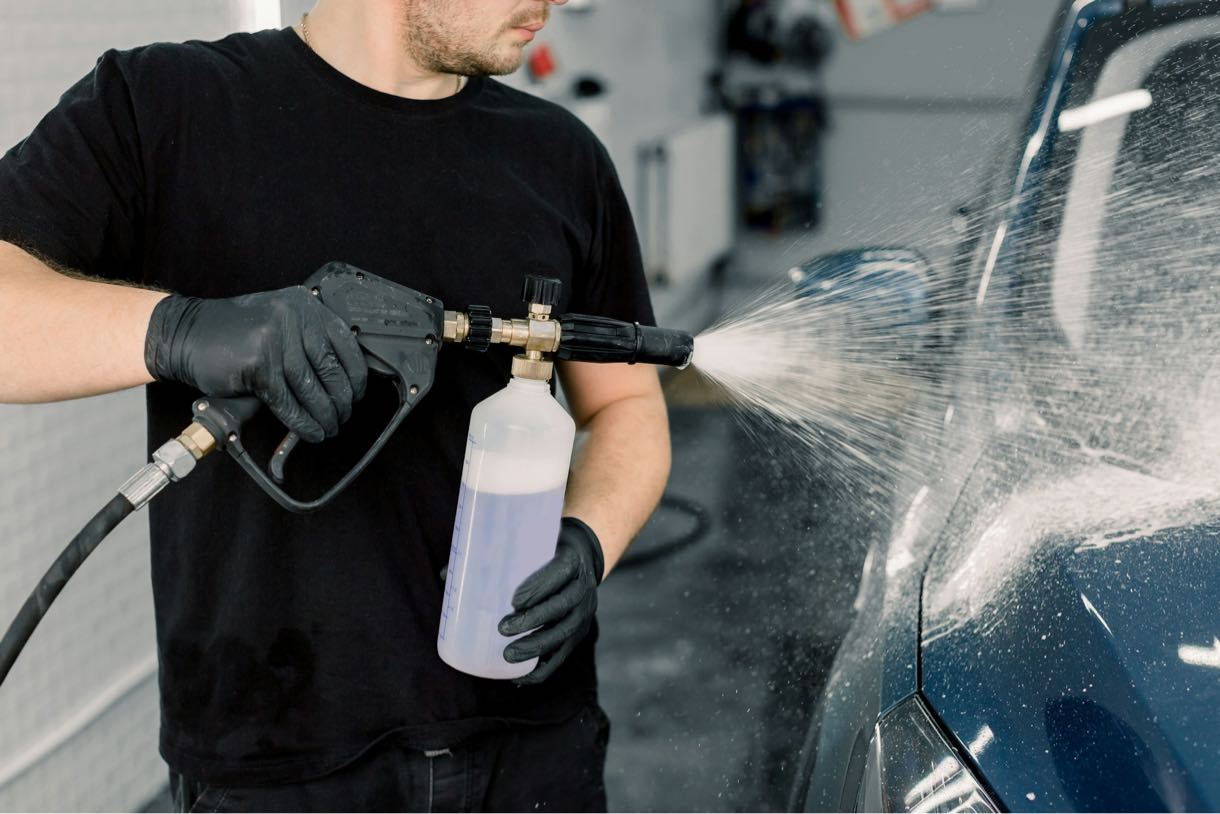Car shipping from Florida to California is a task that needs to be carefully planned and carried out. Setting out on this nearly 2,700-mile cross-country journey is about more than just transporting a car; it’s about making sure it arrives on time, safely, and in compliance with the law. This blog post explores a number of facets of this procedure, providing analysis and helpful guidance to guarantee your car travels smoothly and effectively. This guide seeks to provide you with the necessary knowledge that will clarify the auto transport process, from comprehending the nuances of cost determinants to choosing the best transport option.
This guide answers common questions and concerns you may have when shipping a car over such a long distance, in addition to logistical considerations. We cover important topics like insurance coverage, Florida and California-specific legal considerations, and preparation steps for your vehicle, whether this is your first time shipping a car or you’re looking for more effective ways to handle the process. In addition to guiding you through every step of the auto shipping process, our goal is to provide you with a comprehensive resource that gives you peace of mind knowing that your valuable possession is in capable hands.

Why Car Shipping Costs Vary? Shipping a car from Florida to California, which is a distance of 2,699 miles, typically costs between $1,025 and $1,275 and takes between seven and ten days. There are a number of factors that determine the prices, including the size and type of vehicle, the exact location of the pickup and drop-off within these states, and the shipping method that is selected.
Costs from Major Cities in Florida
- Ship a Car from Jacksonville to Various Cities in California: $1,025 – $1,275
- Ship a Car from Miami to California: $1,025 – $1,275
- Ship a Car from Orlando to California: $1,025 – $1,275
- Ship a Car from Tampa to California: $1,025 – $1,275
SUVs and Trucks For larger vehicles such as SUVs, trucks, and vans, you should anticipate paying between $1,300 and $1,425 for the vehicle.

In order to ensure your car is transported from Florida to California safely and effectively, you must choose the right shipping option. This decision is mostly influenced by the kind of car you plan of shipping, your financial situation, and any specific requirements you may have. Here, we look at the two main modes of transportation: open and enclosed trailers, as well as how the season affects the price and ease of shipping. Knowing these choices will enable you to make an informed choice that best meets your requirements and guarantees the security and safety of your car during its travels.
Open vs. Enclosed Trailers: The majority of automobiles, particularly new ones, are shipped using open carriers since they are economical and frequently utilized. Although cars are exposed to the outside elements while in transit, they are kept safe and securely fastened. Nonetheless, enclosed transportation is frequently advised for brand new or expensive vehicles, such as race cars, luxury models, or classic cars. Enclosed trailers provide an additional degree of security and defense against inclement weather, road debris, and curious onlookers. Even though this method is usually more costly than open transport, collectors and those transporting luxury cars will find peace of mind in it.
Time of Year: The availability and cost of auto shipping services are greatly influenced by the time of year. Prices typically rise in the summer because there is more demand. Relocations and vehicle movements are at an all-time high during this peak season, which results in more stringent schedules and increased transportation costs. Off-peak seasons like fall or early spring can result in more favorable pricing and possibly faster transit times if your shipping dates are flexible. Remember that although winter travel is less expensive, it can still present difficulties because of bad weather, particularly on routes that pass through northern states.

When shipping a car from Florida to California, it is essential to comprehend the procedures and safety precautions involved in the shipping process. The process’s key steps—from getting a quote to receiving your car—are described in this section. It also emphasizes the tracking systems and safety procedures put in place to guarantee the safe and open transportation of your car. Having this knowledge can ease your mind and support you in making wise choices all through the shipping process.
How It Works
Quote and Booking: Getting a quote is the first step in shipping your car. This entails giving specifics about your car and the nature of your shipping requirements. Car shipping companies offer different rates based on vehicle size, transport type, and distance. You can book your transportation once you’ve received a quote that meets your needs and budget. This booking will include scheduling pickup and delivery dates and deciding on the type of transport—open or enclosed.
Vehicle Pick-up: The car shipping company will send a vetted auto carrier professional to pick up your car on the appointed date. In order to guarantee that your car is returned in the same condition, this procedure frequently entails a detailed inspection of your vehicle. After that, the car is strapped onto the carrier, secured, and ready to travel across the nation.
Delivery: When your car gets to California, it’s offloaded carefully. It will be necessary for you or a designated representative to check the car to make sure it has arrived in the same condition as when it was loaded. Following examination, the car is turned over to your care. The delivery procedure is made as easy as possible, frequently offering door-to-door service choices.
Safety and Tracking
Ensuring Vehicle Safety: The security of your car is the first concern during the whole transportation process. In order to guard against any movement or damage while in transit, carriers are outfitted with tools and techniques for securement. Additionally, insurance covering possible damages during transport is a requirement for all legitimate auto carrier transport providers.
Real-Time Tracking: These days, a lot of auto transport companies provide real-time vehicle tracking. You can get the most recent information about your car’s location and status while it’s in transit with this feature. It not only provides an additional degree of security but also updates and reassures you on the status of your car’s journey. Remember that you can always contact your transport coordinator by phone, email, or text message to inquire about the whereabouts of your car.

It’s important to prepare your car before giving it to a shipping company to transport it from Florida to California. This preparation guarantees a hassle-free experience by simplifying the shipping process and protecting your car. We’ll go over all the necessary actions to get your car ready for transport in this section, from doing a comprehensive check to managing personal belongings. These procedures are intended to safeguard your car and adhere to shipping laws, ensuring a secure and effective journey across the nation.
Inspection and Documentation Before shipping, it is imperative that you give your car a thorough inspection and record its condition. Identifying any current dents, scratches, or mechanical problems is the goal of this step. Date-stamped photos are very helpful as they offer an accurate account of your car’s state before shipping. This paperwork guarantees that you have proof to back up your claims if there are any discrepancies upon delivery, which is important for insurance purposes. In addition to keeping you safe, a thorough inspection helps the shipping company handle your car properly.
Remove Personal Items It’s best to remove all personal items from the interior of your car before shipping it. Because of liability and safety concerns, shipping companies frequently have strict policies prohibiting the transportation of vehicles loaded with personal belongings. However, there are some rules to abide by if you must transport specific items in your car. First, inform your transport coordinator about these items in advance. Make sure these things weigh no more than one hundred pounds combined. In order to guarantee a safe and secure journey, place the items in the trunk or beneath the window lines in the rear seat. Adhering to these guidelines guarantees compliance with the shipping company’s policies and helps avert potential shipping complications.

Even though expert auto shipping services are convenient and safe, some people might prefer using other ways to move their car from Florida to California. These substitutes may be more appropriate for certain situations, financial limitations, or personal preferences. We look at a few of these choices below, each with pros and cons of their own.
Self-Drive Those who enjoy long road trips and have extra time can drive the car themselves from Florida to California. You can go on a cross-country adventure with this method, but you should take into account the extra mileage and wear it places on your car. Long-distance driving affects not only fuel expenses but also wear and tear on tires, brakes, and engines, which can have a big impact on your car’s overall maintenance plan.
Hiring a Driver Alternatively, you could hire a seasoned driver to move your vehicle. Between driving yourself and using a shipping service, this can be a good middle ground. It makes it possible to drive your car directly to its destination without putting yourself through the strain of a lengthy drive. This option does, however, still increase your car’s mileage and calls for some degree of driver confidence. Making sure the driver is skilled and has a solid long-distance driving record is crucial.
Shipping by Train There is only one choice if you want to ship your car by train, and that is Amtrak. Amtrak’s Auto Train service offers a unique opportunity to travel nonstop between Lorton, VA (near Washington, DC) and Sanford, FL (near Orlando) with your car. This option spares your car from the wear and tear of a cross-country drive while also being secure and reasonably priced. It’s crucial to remember that this service doesn’t go all the way from Florida to California. From Sanford, Florida to your ultimate destination in California, or from your starting point in Florida to Lorton, Virginia, you would have to drive or make other travel arrangements.

In addition to logistical planning, shipping a car from Florida to California requires adhering to all applicable laws and regulations. The main legal factors that you should be aware of before shipping your car are highlighted in this section. To ensure a smooth transfer and that your car complies with California’s unique standards and regulations upon arrival, it is imperative that you comprehend these factors. These components, which range from insurance to inspections to license requirements and tax obligations, are essential to the auto shipping process.
Insurance Requirements For cars, California sets minimum insurance requirements to guarantee financial responsibility in the case of an accident. $15,000 in coverage for personal injury, $30,000 for each accident, and $5,000 for property damage are all required. It’s crucial to confirm that the insurance on your car satisfies these requirements and offers the required security while it’s in the state.
Vehicle Inspection California rigorously enforces yearly safety inspections to guarantee that every car used on public roads is safe to drive and in good operating order. This inspection, which can be performed at any service station approved by the California Department of Transportation, is intended to check a number of vehicle components, such as the brakes, lights, and emissions system. Maintaining road safety and averting possible legal problems depend on adherence to these safety regulations.
Driver’s License and Taxes It is required of newly arrived residents in California to obtain a driver’s license within ten days of establishing residency. This procedure entails passing both a written exam and, occasionally, a driving exam. In addition, you must pay taxes when bringing your car into California if you bought it outside of California and used it for less than a year. This tax obligation is a component of California’s policies to control the ownership and use of automobiles within its borders.

As we come to the end of our thorough guide, let’s go over the essential components of a successful car transport from the Sunshine State to the Golden Coast. As a quick reference guide to the major topics covered, this summary makes sure you have all the information you need for a hassle-free auto shipping experience.
Understanding the Journey
There are a number of factors to take into account when shipping a car cross-country from Florida to California, including costs, delivery times, selecting the best shipping option, and vehicle preparation. Navigating the complexities of interstate car transportation requires an understanding of these factors. It guarantees your car’s smooth travel as well as your own piece of mind as the owner.
Why Choose Ship A Car, Inc.
When it comes to shipping cars from Florida to California, Ship A Car, Inc. is the best option available. They offer convenience and flexibility to all locations within these states. Every interaction with this company demonstrates their dedication to providing excellent customer service, making sure that your car shipping experience is as stress-free as possible. Their affordable prices, dependable service, and commitment to client satisfaction make them the best option for your vehicle transportation requirements. You can conveniently fill out the online auto transport quote form to get started, or call Ship A Car, Inc. at (866) 821-4555 for a free, no-obligation quote if you’d like a more individualized approach to car shipping.
Q: When shipping a car from Florida to California, how long does the process typically take?
A: Depending on factors such as the distance (actual pickup and drop off location), the weather, and the availability of carriers, it typically takes between seven and ten days.
Q: Would it be necessary for me to be present when my car is being picked up and delivered?
A: The majority of businesses do, in fact, require that a person who is at least 18 years old be present at both the pickup in Florida and the delivery in California operations.
Q: Is my vehicle covered by insurance while it is being transported?
A: Cars are, in fact, insured while they are being transported by the auto carriers’ insurance policy, which protects them from any damages that may occur during the trip. To obtain the highest possible level of protection, it is recommended to purchase additional insurance, such as Othex Protection.
*All data and car shipping rates found in this article are accurate at time of publication and subject to change.




